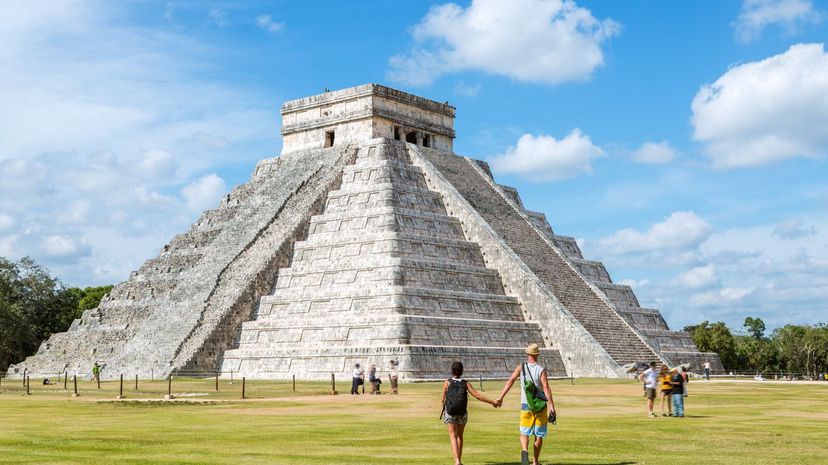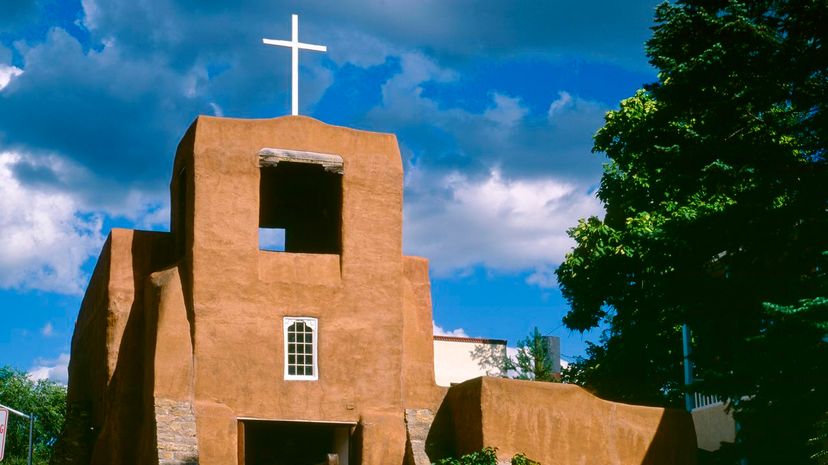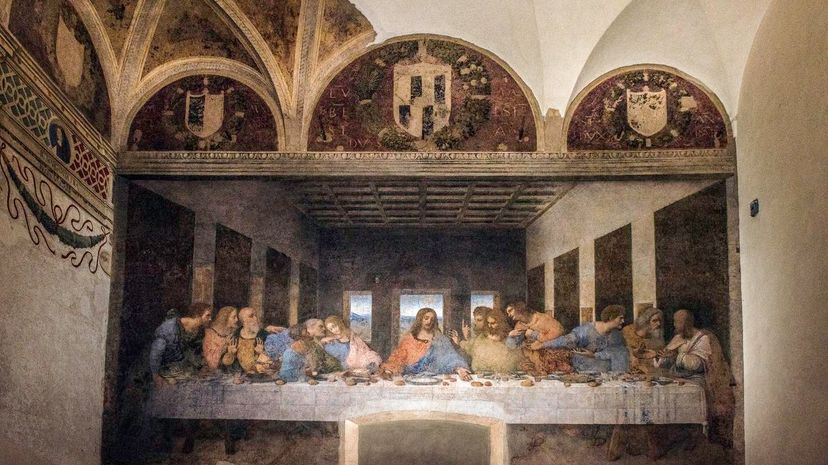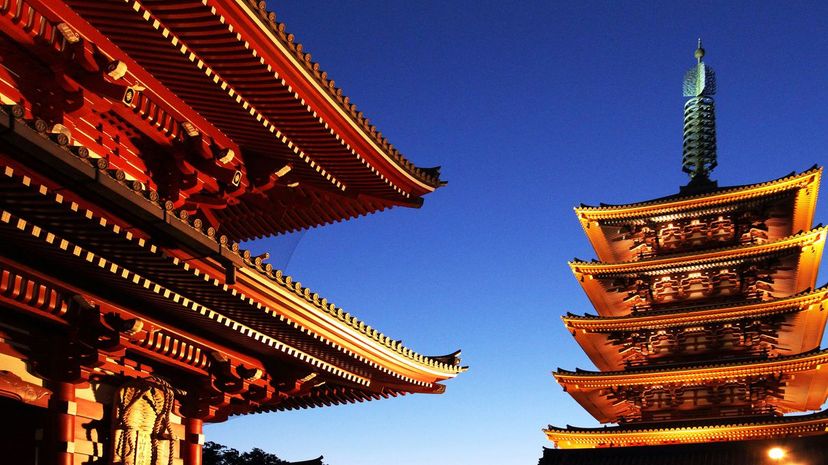
About This Quiz
Who knows what the world would look like without religion? One thing we know is that there would be fewer humanmade landmarks. Many of the world's most famous monuments, structures and landmarks are dedicated to gods, goddesses and figures from every religion. There was a time in history when people didn't build anything of consequence that didn't have religious or spiritual meaning. Tombs, temples, cathedrals, mosques, synagogues and more have been built all over the world. If that's not enough, people have built the most extravagant standalone structures for religious offerings. Every country has at least one religious monument, and some of them are the most famous landmarks in the world.
How much do you know about the most famous religious structures in the world? Notre-Dame in Paris is one of the most visited landmarks in a city full of landmarks. Do you know what religion it's associated with? The Sistine Chapel is right next to St. Peter's Basilica, and both are in the smallest country in the world. Do you know where? You've probably heard about ancient structures, such as the Great Pyramid of Giza and the Parthenon and the Pantheon, but why were they built, and what religions worship them?Â
Put your world knowledge to the test and match the famous landmark to the religion.

Notre-Dame Cathedral was actually being used for storage during the 19th century when Victor Hugo published "The Hunchback of Notre Dame." The novel shined new fame on the cathedral, ensuring its preservation. Sadly, the cathedral suffered major damage in a 2019 fire.

We have never been able to fully understand what Stonehenge is, but it's unlikely any group of people would configure this setup in 3000 B.C. for any purpose other than spiritual or religious. Experts believe it was a burial site.

The Pantheon is a classic example of Ancient Roman architecture. It was completed in 125 AD. The structure was later dedicated to St. Mary and used as a church. Today it's one of the best preserved structures from Ancient Rome.
Advertisement

The Kaaba is surrounded by the Sacred Mosque inside the city of Mecca. Muslims all over the world are expected to face the shrine during prayer, and they are expected to visit once during their lives. More than two million people make the pilgrimage each year.

Many thousands of laborers spent approximately 20 years assembling this 2-million-stone tomb. The Great Pyramid is the largest of the three and was completed in 2560 B.C. It's believed to have been built for Pharaoh Khufu, who ruled from 2589 to 2566 B.C.

The Western Wall is also known as the Wailing Wall or the Kotel. It's believed to have been built by Herod the Great in the first century B.C. The limestone wall stands a bit more than 60 feet tall and spans 1,600 feet.
Advertisement

Several of the tallest statues in the world are depictions of Buddha, but the Leshan Giant Buddha is the tallest stone Buddha in the world, at 233 feet, and it was created in the eighth century. The ears are the only parts not made of stone - they are made of wood and clay.

Michelangelo painted nine depictions of the Book of Genesis on the ceiling of the Sistine Chapel, and more than 5 million people stare up at it each year. The "Creation of Adam" is depicted on the ceiling and is one of the most famous paintings in the world.

Angkor Wat in Siem Reap, Cambodia, was built in the 12th century to honor the Hindu god Vishnu. The name translates to "City of Temples," and it's Cambodia's most famous landmark. It soon became a Buddhist temple, and today it's a monument.
Advertisement

The Sultan Ahmed Mosque, located in Istanbul, Turkey, was completed in the 17th century. It's commonly known as the Blue Mosque because the mosque's interior walls are covered in hand-painted blue tiles. The outside of the mosque also takes on a blue hue from the lights.

The Tiger's Nest is officially called Paro Taktsang. The temple was built in the 17th century, destroyed by fire in the 20th century and then rebuilt. You'll need to hike for about two hours up the side of a Himalayan cliff to reach this temple, located in Bhutan.

People of every religion and no religion have heard of St. Peter's Basilica. It's in Vatican City and is the world's largest Christian church. Saint Peter himself is believed to be buried beneath the site. More than 100 holy figures are buried at St. Peter's, including 91 popes.
Advertisement

Christ the Redeemer, completed in 1931, isn't the tallest statue of Jesus in the world, but it's probably the most famous. The statue's arms stretch close to 100 feet wide. In 2007, it was listed as one of the Seven Wonders of the Modern World.

Being that Jerusalem is one of the world's most sacred cities, it's only fitting that one of the world's most sacred sites sits in town. Christians, Jews and Muslims all recognize Temple Mount for its sacred importance.

St. Paul's Cathedral was built between 1675 and 1710, and it served as inspiration for the design of the U.S. Capitol. The cathedral was home to Princess Diana's wedding, as well as the Silver, Gold and Diamond Jubilees for Queen Elizabeth II.
Advertisement

Upward of 20,000 people visit Cologne Cathedral every day. It's Germany's most famous landmark and one of the largest cathedrals in the world. It was completed in 1880, 632 years after construction began.

This pyramid was built in honor of the god Kukulkan, who was depicted as a feathered serpent. During certain times of year, the sun strikes the temple in a way that casts shadows resembling a feathered serpent.

Even the strictest scientific minds in the world are honored to be immortalized in this church after death. Stephen Hawking was cremated, but Darwin and Newton were both buried there. It's one of England's most famous religious landmarks.
Advertisement

The Milan Cathedral is one of the biggest in the world, featuring 3,400 statues and 135 gargoyles. It is the largest church in Italy, but St. Peter's Basilica (the largest in the world) sits in the country of Vatican City, which is contained within the city of Rome.

The Lotus Temple in Delhi, India, is one of the newer religious landmarks. It was completed in 1986 and is already one of the most visited on the planet. The temple is open to people of all faiths and religions and seats about 2,500 people.

Boston's Old North Church is the location where patriots were told to hang one lantern if the British were coming by land and two lanterns if they were coming by sea. The church was built in 1723 and is Boston's oldest standing church.
Advertisement

The San Miguel Mission was built as early as 1610 and is the oldest known church in the continental U.S. Spanish missionaries built the church in what is now Santa Fe, New Mexico. The church still stands and holds Mass every week.

Leonardo da Vinci painted "The Last Supper" directly on a dry plaster wall in the dining room of the Santa Maria delle Grazie in Milan, Italy. It proved nearly impossible to preserve the painting, but it's still visible today after several restorations.

There are more than 85,000 square feet of extravagant mosaic inside this church that changes as the light hits it. Construction on St. Mark's Basilica in Venice began in 978, after a previous version was destroyed. Today you can enter the church for free, but admission to the museum and some other special areas costs a fee.
Advertisement

The official name of the Golden Temple is Harmandir Sahib, which translates to "abode of God." It is the holiest Gurdwara in Sikhism. The temple was built in the 16th century, and more than 100,000 worshipers visit the shrine every day. The temple was covered in gold in 1830.

The Cathedral of Saint John the Divine is the fifth largest Christian church in the world and the largest in America. It's the largest Gothic cathedral in the world, although it is currently unfinished. It's bigger than France's Notre-Dame and Chartres Cathedral combined.

Hundreds of thousands of workers carved these statues over the course of several generations. The caves sit in a landlocked area of China, and carving began in the fifth century. The smallest statues are just an inch in height, while the largest reach nearly 60 feet tall.
Advertisement

Sagrada Familia, in Barcelona, Spain, is a Roman Catholic church that was named a minor basilica by Pope Benedict XVI in 2010. Construction began in 1882, and it's still under construction. The building features some of the most striking Neo-Gothic architecture in the world.

Hagia Sophia, the Church of the Holy Wisdom, was one of the greatest architectural feats of its time. It was completed in 537 A.D. The structure was built as a Greek Orthodox basilica, then used as a mosque and finally converted into a Christian and Muslim museum.

The Parthenon was completed in 438 B.C., after the first one was destroyed in 480 B.C. The temple is dedicated to the goddess Athena. It's the most famous landmark sitting atop the Acropolis of Athens.
Advertisement

Asia is full of depictions of giant and reclining Buddhas, and this statue in China is the tallest of them all. At 420 feet, the Spring Temple Buddha was the tallest statue in the world until 2018, when the Statue of Unity was erected in India.

The exact geographic location of many holy sites isn't an exact science, but this mountain in Egypt is assumed to be the location where Moses received the Ten Commandments from God. It takes a few hours by camel to reach the summit today.

Malaysia's Batu Caves are one of the most popular attractions in the country and one of the most popular Hindu shrines outside of India. The caves are believed to be about 400 million years old and have been a site of worship since the 19th century.
Advertisement

As the Kaaba is considered the holiest site in Islam and the Western Wall is the holiest in Judaism, the Church of the Holy Sepulchre is considered the holiest Christian site. It's the site where Jesus was crucified, and it also holds the empty tomb where he was buried and resurrected.

The site of St. Patrick's Cathedral was originally a college back in 1810 but became a chapel by 1840. Construction of the current cathedral began in the 1850s and was opened to the public in 1879. Today it's one of the most famous churches in the U.S., surrounded by skyscrapers.

Vatican City is the smallest and least populous country in the world, yet one of the holiest. It's home to the pope and a slew of important religious structures. Thousands of tourists flock to the city-state every day.
Advertisement

Saint Basil's Cathedral was constructed in the 16th century under Tsar Ivan IV but has undergone renovations and additions since then. The cathedral became a museum in 1923. The design is meant to resemble bonfire flames rising to the sky.

Fewer than 100 people live on this island, but it's visited by nearly 3 million people each year. Mont-Saint-Michel Abbey sits atop the island, which is connected to mainland France by a footbridge. The abbey has survived since the eighth century, mostly due to its location.

This bust of the Hindu god Shiva is 112 feet tall and weighs approximately 500 tons. Guinness World Records recognizes the figure as the largest statue bust in the world. It was completed in 2017.
Advertisement

Sensoji Temple in Asakusa was erected in 645 A.D. - it is Japan's oldest temple. About 30 million people visit the site every year, making it one of the world's most visited religious sites.